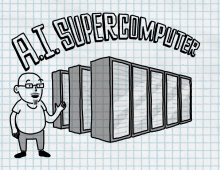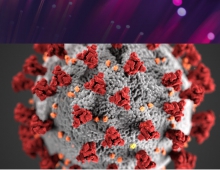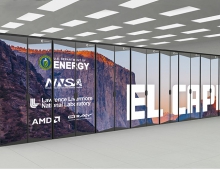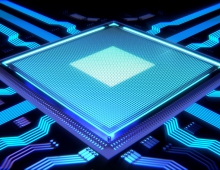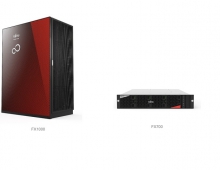
China Extends Lead in Number of TOP500 Supercomputers, US Holds on to Performance Advantage
The 54th edition of the TOP500 saw China and the US maintaining their dominance of the list, albeit in different categories. Meanwhile, the aggregate performance of the 500 systems, based on the High Performance Linpack (HPL) benchmark, continues to rise and now sits at 1.65 exaflops.
The entry level to the list has risen to 1.14 petaflops, up from 1.02 petaflops in the previous list in June 2019.
The top of the list remains largely unchanged. In fact, the top 10 systems are unchanged from the previous list.
Summit and Sierra remain in the top two spots. Both are IBM-built supercomputers employing Power9 CPUs and NVIDIA Tesla V100 GPUs. Oak Ridge National Laboratory’s Summit system holds top honors with an HPL result of 148.6 petaflops. The second-ranked Sierra system at Lawrence Livermore National Laboratory comes in at 94.6 petaflops.
Close behind at number three is the Sunway TaihuLight supercomputer, with an HPL mark of 93.0 petaflops. TaihuLight was developed by China’s National Research Center of Parallel Computer Engineering & Technology (NRCPC) and is installed at the National Supercomputing Center in Wuxi. It is powered exclusively by Sunway’s SW26010 processors.
Tianhe-2A (Milky Way-2A), a system developed by China’s National University of Defense Technology (NUDT) and deployed at the National Supercomputer Center in Guangzhou, China, holds the number four spot with 61.4 petaflops. It is powered by Intel Xeon CPUs and Matrix-2000 accelerators.
Frontera, a Dell C6420 system, keeps it number five ranking, with an HPL result of 23.5 petaflops. Powered solely by Xeon Platinum processors, it was installed at the Texas Advanced Computing Center of the University of Texas in 2018.
At number six is Piz Daint, a Cray XC50 supercomputer installed at the Swiss National Supercomputing Centre (CSCS) in Lugano, Switzerland. At 21.2 petaflops, it remains the most powerful system in Europe.
Trinity, a Cray XC40 system operated by Los Alamos National Laboratory and Sandia National Laboratories is ranked number seven, with an HPL performance of 20.2 petaflops. It is powered by Intel Xeon and Xeon Phi processors.
Listed at number eight is the AI Bridging Cloud Infrastructure (ABCI), installed at Japan’s National Institute of Advanced Industrial Science and Technology (AIST). The Fujitsu-built system is equipped with Intel Xeon Gold processors and NVIDIA Tesla V100 GPUs, achieving an HPL result of 19.9 petaflops.
SuperMUC-NG is in the number nine position with 19.5 petaflops. It’s installed at the Leibniz-Rechenzentrum (Leibniz Supercomputing Centre) in Garching, near Munich. The Lenovo-built machine is powered by Intel Platinum Xeon processors.
The Lassen supercomputer is ranked number 10, delivering 18.2 petaflops. Installed at Lawrence Livermore National Laboratory, Lassen is the unclassified counterpart to the classified Sierra system and shares the same IBM Power9/NVIDIA V100 GPU architecture.
The most powerful new supercomputer on the list is AiMOS, which shows up at position 24, turning in an HPL result of 8.0 petaflops. The IBM-built system is installed at the Rensselaer Polytechnic Institute Center for Computational Innovations (CCI), and like Summit, Sierra, and Lassen, it is equipped with Power9 CPUs and NVIDIA V100 GPUs.
Geographical breakdown
The number of TOP500 installations in China continues to rise and now sits at 227, up from 219 six months ago. Meanwhile, the share of US-based system remains near its all-time low at 118. However, systems in the US are on average significantly larger, which translated to a 37.8 percent share of the list’s aggregate performance. China is close behind with a 31.9 percent performance share. However, compared to six months ago, this performance gap has shrunk. The June 2019 list had the US with a 38.4 percent of the list’s aggregate performance and China with 29.9 percent.
Japan remains in third place in the number of TOP500 systems, with 29, followed by France with 18, Germany with 16, the Netherlands with 15, Ireland with 14, and the United Kingdom with 11. All other countries were in the single digits.
Vendor shares
As a reflection of China’s dominance in sheer numbers, the top three system vendors with regard to the number of installations are Lenovo, (174), Sugon (71), and Inspur (65). Cray is number four, with 36 systems, and HPE is number five, with 35. Note that Cray is now part of HPE, so taken together they would effectively tie Sugon with 71 systems.
At the chip level, Intel continues its dominance. Its processors are present in 470 of the 500 systems, split between multiple generations of Xeon and Xeon Phi hardware. IBM is second with 14 systems – 10 with Power CPUs and four with Blue Gene/PowerPC CPUs. AMD claims just three systems on the current list.
There are now two Arm-based supercomputers on the list: the Astra system deployed at Sandia National Laboratories, which is equipped with Marvell’s ThunderX2 processors, and Fujitsu’s A64FX prototype system, a precursor to the Fugaku (Post-K) exascale system destined for RIKEN in 2021. The Fujitsu machine is new to the list and occupies position 159, with an HPL performance of 2.0 petaflops.
NVIDIA is the dominant vendor for accelerators. Its GPUs are present in 136 of the 145 accelerated systems. On the previous list six months ago, there were 134 accelerated systems.
Interconnect breakdown
Ethernet is used in 52 percent (258) of the TOP500 systems, while InfiniBand is the network-of-choice in 28 percent (140) of systems. However, from a performance perspective, those positions are reversed, with InfiniBand-based machines representing 40 percent of the TOP500’s aggregate performance and Ethernet-based machines with 29 percent. Custom interconnects, with just 46 installations, claim 22 percent of the list’s installed performance.
Green500 results
The related Green500 list, which measures energy-efficiency of the world’s top supercomputers, has changed considerably compared to six months ago. Number one on the list is the aforementioned A64FX prototype supercomputer, which delivered 16.9 gigaflops/watt. Just slightly less green at number two system is NA-1, a Zettascaler machine that uses PEZY Computing’s PEZY-SC2 processors and delivers 16.3 gigaflops/watt. It is being readied for a future installation at NA Simulation in Japan.
The third-ranked Green500 system is the new AiMOS system from IBM, followed by two more IBM systems based on the same Power9/NVIDIA V100 design: Satori at 15.6 gigaflops/watt and Summit at 14.7 gigaflops/watt. The remaining top 10 Green500 systems on the list – AI Bridging Cloud Infrastructure, MareNostrum P9 CTE, TSUBAME 3.0, PANGEA III, and Sierra – also use NVIDIA GPU accelerators.
HPCG results
The two top-ranked Summit and Sierra supercomputers on the TOP500, also remain in the top two spots on the list based on the High-Performance Conjugate Gradient (HPCG) benchmark. Summit achieved 2.93 HPCG-petaflops, with Sierra at 1.80 HPCG-petaflops. All the remaining top 10 HPCG entries, delivered less than one HPCG-petaflops. With the exception of the now-decommissioned K-computer, all 10 of these systems carried over from the previous list six months ago.

